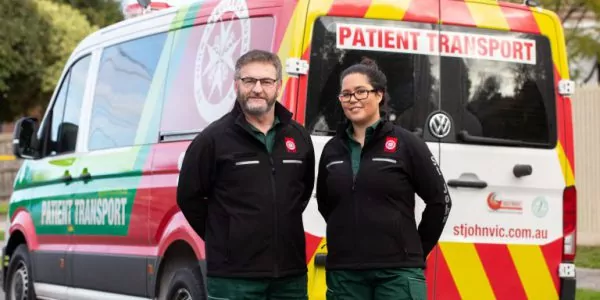Nurse to Paramedic: What’s the difference?
If you’re keen to stay in medicine but looking for a little more freedom and autonomy in your role, changing careers from nursing to paramedicine could be the right choice for you.
As a Nurse, it goes without saying that you have a whole range of skills and qualities which could help you have a successful career as a Paramedic. However, despite both roles focussing on patient care as an absolute priority, there are some differences in the education and skills you need to consider before taking the leap.
On-ward to on-road
Nurses are typically required to work within contained environments, such as hospitals, medical facilities etc. On the other hand, Paramedics work on-road and are often the first to arrive on scene at a range of different emergencies throughout the day.
Longer-term care to quick decisions
One of the biggest differences when switching from a career as a Nurse to a Paramedic is the transition from providing holistic care to a group of patients vs. quickly assessing the medical state of a patient and making snap decisions to provide essential care. Alongside this, as a nurse you can find yourself working alongside a team of doctors and other medical staff. As a Paramedic, you can work in very small teams.
While this can be demanding, the satisfaction of playing such an important and pivotal role in someone else’s recovery is what makes being a Paramedic so rewarding.
RPL pathway to transition from a Nurse to a Paramedic
It’s worth noting that to become a Paramedic, you are required to hold a Bachelor of Paramedical Science or equivalent degree. With all your qualifications and experience as a Nurse, you could use recognition of prior learning (RPL) to help you achieve your goal of becoming a Paramedic quicker.
There are a few ways that Australian Paramedical College (APC) can help with this.
Change careers from Nurse to Paramedic
Step 1: RPL into Diploma
Apply for RPL and/or credit transfer into the HLT51020 – Diploma of Emergency Health Care with APC.
This is a cost-effective way to transition into the pre-hospital emergency healthcare system, without committing to a university degree. Making a tentative step into emergency care in the private sector has been a successful approach for many people. Doing it this way means you can continue to work while you study, so the financial investment is not as large as university and the transition into pre-hospital care is faster too.
Step 2: Diploma to Degree
Use a Diploma of Emergency Health Care to acquire course credits towards the Bachelor of Paramedical Science. This could reduce the time you need to spend at university.
Step 3: Graduate and become a Paramedic
Complete the degree and apply for a position with a State Ambulance Service or work in the private sector as a Paramedic. Learn all about becoming a Paramedic here.
Nurse to private sector Medic
Step 1: RPL into the Diploma
RPL your existing nursing qualifications and experience, and complete the essential bridging units of competency to gain the HLT51020 – Diploma of Emergency Health Care.
Step 2: Start work as a Medic
Begin your career as a Basic-to-Advanced Life Support Medic in the private sector (event medic, mining, oil and gas, community, etc).
If you’re not sure which career pathway you want to take immediately, that’s okay! Deciding to further your studies and ultimately change careers from in-hospital care to pre/out-of-hospital care is a huge step and a great place to start.
Hear from students transitioning from nursing
Transfer your nursing skills
Clinical expertise & medical knowledge
Use your existing skills and experience to continue delivering high quality medical care
Effective communication
Being able to connect and communicate with patients is just as important for Paramedics as it is for Nurses
Empathy & patient care
Paramedics need to demonstrate the same level of compassion and understanding as Nurses on a day-to-day basis
Explore other career pathways
Ready to learn more?
Take a closer look at our courses and have a chat to one of our friendly Course Advisors to find out how APC can help you create that amazing career you’ve always dreamed of.


